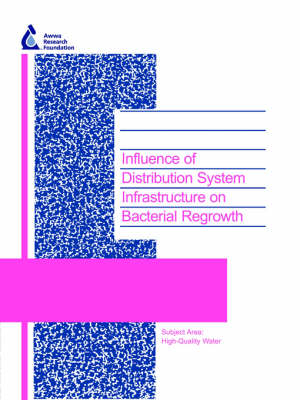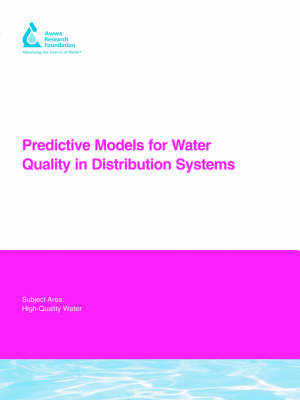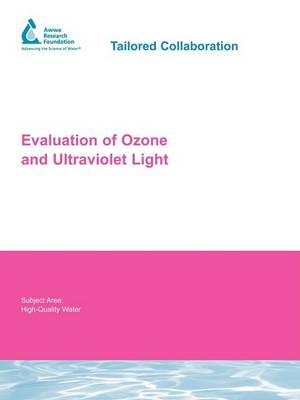Water Research Foundation Report
7 total works
Application of HACCP for Distribution System Protection
by Katherine Martel, Gregory Kirmeyer, Amie Hanson, M. Stevens, J. Mullenger, and D. Deere
Published 1 December 2006
The purpose of this project was to evaluate the application of the Hazard Analysis Critical Control Point (HACCP) system, a risk management tool, to better protect water quality in distribution systems. HACCP was first conceived in 1959 by the Pillsbury Company to improve food safety for NASA's manned space missions. Since the 1980s, HACCP has been widely adopted by the food and beverage industry worldwide, where it forms an important part of their food safety plans. Since the mid-1990s, HACCP has been applied by a number of individual drinking water systems and has been incorporated into many drinking water regulatory requirements and guidelines around the globe. The HACCP system complements the current U.S. approach to managing distribution system water quality centered on water quality monitoring and regulatory compliance. It will help utilities focus resources on key risks and improve emphasis on operational processes and controls. The recommended approach is to implement quality assurance programs such as HACCP prior to experiencing waterborne disease outbreaks or other contamination events. A recommended first step is to improve utility programs to meet the AWWA Standard G200-Distribution Systems Operation and Maintenance. The utility may then consider implementing ISO 9001 and 14001 or an integrated management system.
Performance and Metal Release of Non-Leaded Brass Meters, Components and Fittings
by Anne Sandvig
Published 11 August 2007
Leaded brass has historically been used in potable water systems, however it has been found to leach lead under certain circumstances and therefore alternative non-leaded brass has been developed. Non-leaded brass is defined as brass with no lead added, which typically equates to a lead content of 0.1 percent to 0.25 percent by weight. There are several knowledge gaps associated with the manufacture and performance of in-line and premise plumbing components made using these new non-leaded materials, including operations and maintenance issues that may arise with their use, and their potential for leaching other compounds into the drinking water.
The project developed a series of topic papers that identified the issues and knowledge gaps related to the implementation of non-leaded components in the distribution system. Based on information from the topic papers, research needs were identified and a research agenda for non-leaded brass was developed, with projects identified in the following major issue areas:
Leaching, Performance, and Product Acceptance Criteria Costs Plumbing Code Revisions and Marketplace Enforcement Education and Technology Transfer Manufacturing Issues Regulatory Impact and Implementation
The project developed a series of topic papers that identified the issues and knowledge gaps related to the implementation of non-leaded components in the distribution system. Based on information from the topic papers, research needs were identified and a research agenda for non-leaded brass was developed, with projects identified in the following major issue areas:
Leaching, Performance, and Product Acceptance Criteria Costs Plumbing Code Revisions and Marketplace Enforcement Education and Technology Transfer Manufacturing Issues Regulatory Impact and Implementation
Contribution of Service Line and Plumbing Fixtures to Lead and Copper Rule Compliance Issues
by Anne Sandvig, Patrick Kwan, Gregory Kirmeyer, B. Maynard, D. Mast, R. Trussell, S. Trussell, A. Cantor, and A. Prescott
Published 19 April 2009
Implementation of the Lead and Copper Rule (LCR) has resulted in significant reductions in first liter standing lead levels measured at the tap in the United States. However, there are still utilities that have implemented optimal treatment but may still experience lead levels at or near the action level for lead, or those that would like to go a step further in reducing lead levels measured in their system by proactively replacing lead source materials. For these utilities, and water works and regulatory communities as a whole, an understanding of the contributions that various lead based materials may have on lead levels measured at the tap would be useful.
The objective of this research project was to evaluate the contribution of lead service lines and utility and customer-owned plumbing components to Lead and Copper Rule (LCR) compliance issues. The results of this project also address the broader long-term goals of moving the industry towards a new "lead free" future and providing information that can be directly applied to future regulatory reviews of the LCR. This project utilized information from historical literature, conducted a national survey of lead source characteristics, completed case studies of lead source removal and corrosion treatment effectiveness, and completed field and pilot study activities designed to estimate the contributions of various lead sources to lead levels measured at the tap. This information was used to evaluate the relative contribution of various lead sources to lead levels at the tap and how these contributions might affect compliance with the LCR. In addition, an assessment of the impact of pipe cutting tools was completed to provide guidance on the best methods for removing lead service lines. The composition of scales built up on lead source materials was evaluated to expand the knowledge base related to identification of compounds that form on leaded materials in drinking water systems and correlations between these scales and distributed water quality conditions.
The objective of this research project was to evaluate the contribution of lead service lines and utility and customer-owned plumbing components to Lead and Copper Rule (LCR) compliance issues. The results of this project also address the broader long-term goals of moving the industry towards a new "lead free" future and providing information that can be directly applied to future regulatory reviews of the LCR. This project utilized information from historical literature, conducted a national survey of lead source characteristics, completed case studies of lead source removal and corrosion treatment effectiveness, and completed field and pilot study activities designed to estimate the contributions of various lead sources to lead levels measured at the tap. This information was used to evaluate the relative contribution of various lead sources to lead levels at the tap and how these contributions might affect compliance with the LCR. In addition, an assessment of the impact of pipe cutting tools was completed to provide guidance on the best methods for removing lead service lines. The composition of scales built up on lead source materials was evaluated to expand the knowledge base related to identification of compounds that form on leaded materials in drinking water systems and correlations between these scales and distributed water quality conditions.
Asset Management Research Needs Roadmap
by Dr. D. Harp, A Graham, Gregory Kirmeyer, Evelyn Wessels, E. Tenny, S. McKinney, B. Templin, D. Hughes, and J Fortin
Published 14 October 2008
This report is available as a Pay-Per-View item only.
Many utilities are uncertain about asset management, have delayed or scaled down implementation efforts, and do not see a clear path for embarking on a comprehensive asset management program. There is currently no strategic industry focus for the planning and funding of future research efforts in the area of asset management for water and wastewater utilities. As such, AwwaRF recognized a need to gather the key utility subscribers and stakeholders together to help develop an asset management research needs roadmap with an emphasis on drinking water systems.
The goals of this project were to assemble key organizations and experts to evaluate the available asset management information and identify future water and wastewater community needs that research could help solve. The report will summarize the asset management landscape, identify critical information gaps, develop research project ideas, and generate a strategic approach for the funding of research to fill the gaps.
Many utilities are uncertain about asset management, have delayed or scaled down implementation efforts, and do not see a clear path for embarking on a comprehensive asset management program. There is currently no strategic industry focus for the planning and funding of future research efforts in the area of asset management for water and wastewater utilities. As such, AwwaRF recognized a need to gather the key utility subscribers and stakeholders together to help develop an asset management research needs roadmap with an emphasis on drinking water systems.
The goals of this project were to assemble key organizations and experts to evaluate the available asset management information and identify future water and wastewater community needs that research could help solve. The report will summarize the asset management landscape, identify critical information gaps, develop research project ideas, and generate a strategic approach for the funding of research to fill the gaps.
Influence of Distribution System Infrastructure on Bacterial Regrowth
by Jonathan Clement, Catherine Spencer, A. Capuzzi, Anne Camper, Kristin van Andel, and Anne Sandvig
Published 1 January 2004
This study has shown that higher levels of carbon supported greater biofilm growth and planktonic populations on the materials that were tested, although the effect was most pronounced on iron pipe. Utilities with significant amounts of iron pipe in their distribution systems may be faced with the greatest regrowth potential. For utilities that also distribute water that is high in natural carbon, this problem may be compounded. Therefore, reducing the organic carbon in the finished water may be effective for any utility wishing to reduce regrowth problems in their distribution system. Other alternatives for utilities wishing to reduce biofilms in the distribution system can include any or all of the following: replacing or relining iron pipe in the system, increasing disinfectant, and implementing effective corrosion control. Originally published by AwwaRF for its subscribers in 2003
Predictive Models for Water Quality in Distribution Systems
by Jonathan Clement
Published 30 April 2005
There are two groups of specialists involved in the development and application of water quality models, each of which have a different perspective on the use of models: Academics and scientists - chemistry specialists and microbiologists who develop the models. Practitioners - modelers and distribution engineers who use them to solve problems. There are limitations and constraints in the characterization of the underlying processes and the practical application of models to distribution networks, which require further research. The objectives of the research were to characterize the current state of predictive distribution system water quality models and to identify critical research needs for their improvement. The project reviewed both the development and application of models. The report is intended to both steer future research and to act as a general reference on water quality modeling. The report combines a literature review with the practical experience of the project team. The content of a draft report was discussed at an international workshop attended by academics, engineers, scientists, and hydraulic modelers with the objective of agreeing on specific research needs necessary to improve predictive modeling for water quality in distribution systems. The conclusions of the report are derived from the workshop and form the basis of 11 specific research briefs that have been submitted to AwwaRF for consideration of funding. Researchers often focus on modeling the individual processes that control water quality rather than fully modeling water quality throughout distribution systems. For these "process models" to be applied to real distribution networks, they need to be extended to take in account the physical characteristics of the system?the special and temporal variations in flow, velocity and water age, and the effects of mixing water that has traveled along different flow paths.
Evaluation of Ozone and Ultraviolet Light
by R. Hulsey, J. Malley, Catherine Spencer, A. Capuzzi, and S. Farabaugh
Published 1 March 2006
The objectives of this project were to: evaluate the benefits of ultraviolet light (UV) and ozone and determine how to integrate the two disinfection systems efficiently; compare medium pressure UV light (MP-UV) with the combination of ozone and MP-UV to determine their effectiveness in meeting CT requirements for inactivation of Giardia, Cryptosporidium, and viruses, especially in cold water; and compare the effects of MP-UV and the combination of ozone and MP-UV on the formation of disinfection by-products, DBP precursors, and the biostability/bacterial regrowth potential. Protozoan parasites are a major public health concern as evidenced by waterborne outbreaks of Cryptosporidium in the early 1990s. USEPA regulators have proposed new regulations which require site-specific means corresponding to the source water for the removal or inactivation of Cryptosporidium. For water systems with vulnerable sources, UV disinfection offers a cost effective approach. Utilities that have already installed ozone systems and those considering a multiple barrier approach to disinfection are interested in the effectiveness of UV alone and UV combined with ozone.



